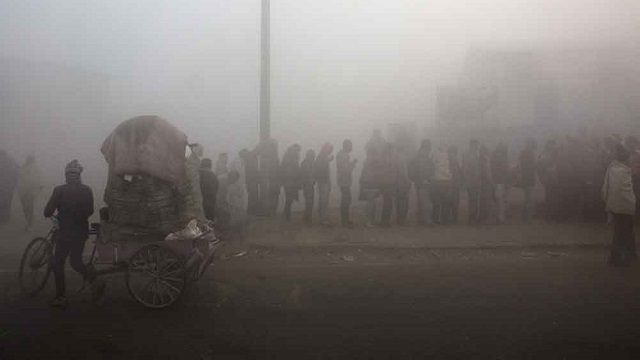As Delhi continued to breathe toxic air for over 30 hours, the Supreme Court-appointed EPCA on Thursday issued directions to take urgent measures under the Graded Response Action Plan (GRAP) from Friday and stop the entry of trucks in the city for a day.
Delhi’s air quality was in the “very poor” category on Tuesday, before it deteriorated to “severe” on Wednesday as it was on Monday.
On Thursday, it remained in the “severe” zone with the overall Air Quality Index (AQI) at 444 (severe), with PM2.5 and PM10 as major pollutants.
Environment Pollution (Prevention & Control) Authority Chairman (EPCA) Bhure Lal in his letter to Delhi Chief Secretary Vijay Kumar Dev said that in case the situation does not improve by Friday morning, entry of trucks into Delhi (except essential commodities) may be stopped.
“The enforcement of this direction requires coordination of all NCR states and you are therefore requested to take steps to ensure that this happens. Also, the opening of the Eastern and Western Expressways will make this easier to implement as the tracks that are not destined for Delhi now have convenient alternatives to take,” the EPCA head said.
The pollution control authority, as per the recommendations made by the Central Pollution Control Board (CPCB) Task Force, has also directed to issue public notice asking people to minimise use of personal vehicles and avoid prolonged exposure because of unhealthy air.
The task force has also recommended that measures which are already in force “must continue with intensified action by implementing agencies, particularly with regard to traffic congestion, open burning of waste and industrial emissions”.
The “severe-plus” condition that has prevailed in the national capital for more than 30 hours saw PM2.5 levels exceeding 300 microgrammes per cubic meter.
As per the India Meteorological Department (IMD), currently, the wind speed is around 10 kmph and is likely to increase resulting in better dispersion. But a forecast of light scattered rain on January 5 evening and the night of January 6 might further deteriorate the air quality in the city.
Across 35 areas in Delhi where pollution is actively monitored, the average concentration of PM2.5 and PM10 was 359 and 530 microgrammes per cubic meter on Thursday at 9 p.m.
The concentration of the two pollutants across 48 monitoring stations in the NCR was 338 and 503.
The safe limit for PM2.5 is 60 units as per national standards and 25 units according to international standards. For PM10, up to 100 units is safe by national standards and 50 units by international standards.
Both PM2.5 and 10 get into the lungs and cause cardiovascular and respiratory diseases, but PM2.5 is more dangerous because it mixes with the blood stream.
According to the CPCB, if the quality gets worse and reaches the “very poor” level, a ban is imposed on the use of diesel generator sets, coal/ firewood in hotels and open eateries, parking fee increased 3-4 times, and bus and metro services are increased.
Also, under the GRAP, media organisations are alerted to advise people with respiratory and cardiac patients to avoid polluted areas and restrict outdoor movement.
The measures implemented when the level touches “severe” include closing of brick kilns, hot-mix plants, stone crushers, shutting down of the Badarpur power plant and maximising power generation from the existing natural gas-based plants.
When the pollution level dips to “severe+”, a ban is imposed on the entry of trucks, except those carrying essential commodities, into Delhi, and construction activities stopped.







